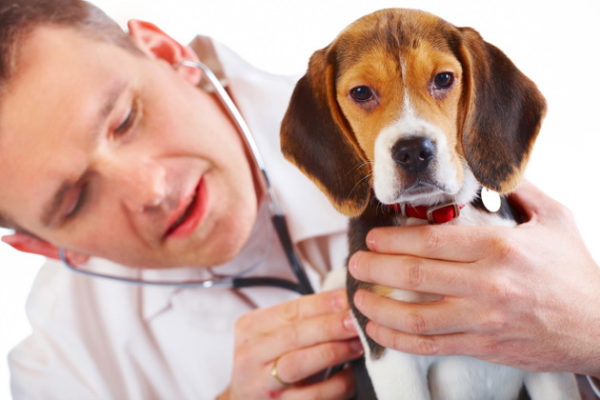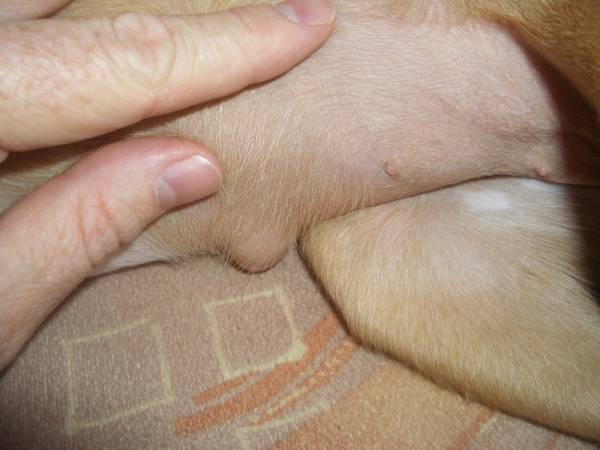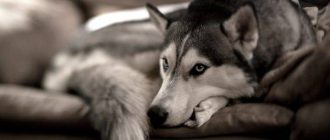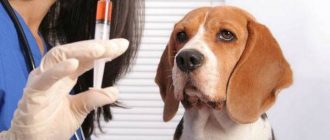Pathology called “hernia” is often diagnosed not only in humans, but also in dogs. Is this a hazard when it comes to is about a pet, and how is a hernia in a dog treated? Which information should a caring owner own?
Content
- 1. Types and features of hernial formations
- 2. Umbilical type of hernia in dogs
- 3. Symptoms of umbilical hernia
- 4. What triggers development?
- 5. Methods of diagnosis and treatment of umbilical hernia
- 6. Inguinal hernia in dogs
- 7. Video about a hernia in a dog
- 8. Crotch hernia in dogs
Types and features of hernial formations
Contents
A hernia, in fact, is a hole (gate) in the wall of the peritoneum, through which the hernial sac comes out – the cavity containing different organs that may fall into the resulting passage. More often the uterus, part of the intestine, or duplication of the peritoneum, in a simple way – an omentum that unites all organs abdominal cavity. 
There are hernias of acquired and congenital origin. If a even the puppy was born completely healthy, there are no guarantees that he does not appear a similar pathological change.
There is also another classification – based on location localization, hernia is umbilical, perineal and inguinal. Everyone the type of pathology has its own characteristics and has a specific symptomatic picture.
Umbilical type of hernia in dogs
A similar type of herniation is more often detected in just born puppies. It is mainly a congenital type pathological disorders. This type can appear in any dog, regardless of her breed.
Umbilical hernia alone is not dangerous, but its presence should alert the host – it often accompanies more serious congenital malformations: defects in the walls of the peritoneum, incomplete thoracic connection, etc. In addition, in puppies with a hernia cryptorchidism is often diagnosed, that is, identical.
Umbilical hernia is referred to as hereditary pathologies, therefore experienced breeders often sterilize dogs with this disorder, to avoid offspring with a similar anomaly. Having discovered her puppy, it is important not to let everything drift and as quickly as possible show the pet to the veterinarian.
Symptoms of an umbilical hernia
It is difficult not to pay attention to such a pathology – in the field of the pet peritoneum appears a small ball, the surface which is formed by the skin. The size of the hernia can be different – from a couple of millimeters to a few centimeters.
In addition, the dog may experience the following symptoms:
- lethargy, weakness;
- loss of appetite;
- soreness in the area of inflammation;
- significant increase in heart rate and heart rate respiratory process.
But, as a rule, such a symptomatic picture is observed in animals with a pinched hernia.
What triggers the development?
There are many versions and hypotheses regarding factors of occurrence. umbilical hernia, they are associated with violations during delivery. But nature made sure that during the appearance of puppies the umbilical ring could stretch as much as possible while not get damaged.
The development of pathology is hereditary, in addition, There are a number of predisposing factors:
- flatulence, bloating;
- muscle cramps of the peritoneum;
- increased abdominal pressure.
If puppies have a history of predisposition to hernia, then no precautions will prevent the protrusion hernial sac in the navel.
Methods for the diagnosis and treatment of umbilical hernia
First of all, the veterinarian probes hernia with his fingers, identifying it the size. The same method allows you to determine its content and mobility. After the examination, the doctor should decide whether the animal is in treatment or education may be eliminated on its own (with small sizes this happens quite often).
A small hernia formed by adipose tissue can save its size and structure and not provoke any violations. At such hernias are small gates, therefore, prolapse of organs excluded. 
Sometimes even a small hernia is removed, but more often we are talking about the aesthetic side of things. Often education removed during other planned surgical interventions, for example sterilization.
If there is an increased risk that through the hole intestinal loops may fall out or there is a high probability of infringement, then surgical treatment cannot be avoided. Rare but hernia becomes cause of animal death.
If the doctor removes the hernia together with the planned intervention, then this happens when the puppy reaches 8 weeks of age. But later surgery is preferred when the pet is already all necessary vaccinations have been delivered to protect him from infectious diseases.
Before surgery, it is important for the surgeon to decide what type of anesthesia use, plan recovery activities. IN the arsenal of a specialist several methods for the removal of umbilical hernias: according to Olivkov, Sapozhnikov or Goering-Sedamgrotsky. After uninstall he sews hernias with a knotted suture.
Inguinal hernia in dogs
Most often, a similar pathology occurs in bitches, has the form swelling localized in the groin. At the same time both oval and oblong hernial formations, single or bilateral.
If an infringement of the hernial sac occurs, then the dog most of time is lying down and often licks sore plot. The hernia gradually condenses, while palpating can significant pain occur. Usually in an inguinal sac hernias contain intestinal loops, omentum, much less often in it the uterus enters.
Provoking factors are similar to those that cause the appearance of umbilical hernia. In addition, the anatomical feature of the structure of the groin in the animal. There are two types of inguinal hernia formation: correctable and irreducible.
Before prescribing therapy, it’s important for the veterinarian to find out what is inside the hernia is the uterus or bladder. At the first type of pathology, if the bitch bears puppies, with their growth education will get bigger. In the second case there will be urine is released when palpating a hernia or pressing on an area inflammation.
Only by determining the type of hernia, revealing its features, the doctor develops a surgical plan.
Dog hernia video
Perineal hernia in dogs
With this type of hernia formation of the peritoneal wall, it is quite protrude very much. The area of localization is due to sexual accessory: in dogs, it is located between the bladder and the rectum, and in females – between the uterus and the intestine.
It may seem that the umbilical is leading in prevalence hernia, but statistics refute this – the palm is located it is in the perineal hernia formation. Crotch type a hernia may occur due to the following conditions:
- Muscular overstrain. Reason for this pathology may be an excessive tension of the muscles of the peritoneum. At often this happens due to prolonged constipation, diarrhea or inflammation of the mucous tissues of the rectum.
- Decreased fiber elasticity. To factors provoking the development of pathology, include reduced elasticity subcutaneous fat – hypodermis located in Intra-pelvic area. Typically, this dermal disorder develops due to various diseases leading to a decrease in tone canine body.
The crotch hernia sac contains the bladder, rectum or uterus. Outwardly, it has practically no differences from other formations, only located in the perineum. how and other types, perineal hernia formation is adjusted by a veterinarian manually. But in some cases the only effective the treatment method is the surgical method.
Hernia in dogs is detected not so rarely, regardless of age (both in puppies and in adult pets). Seriousness pathology depends on various factors, but even the smallest education requires a specialist visit. Only a doctor can decide whether the pathology threatens the animal’s health, or not.






